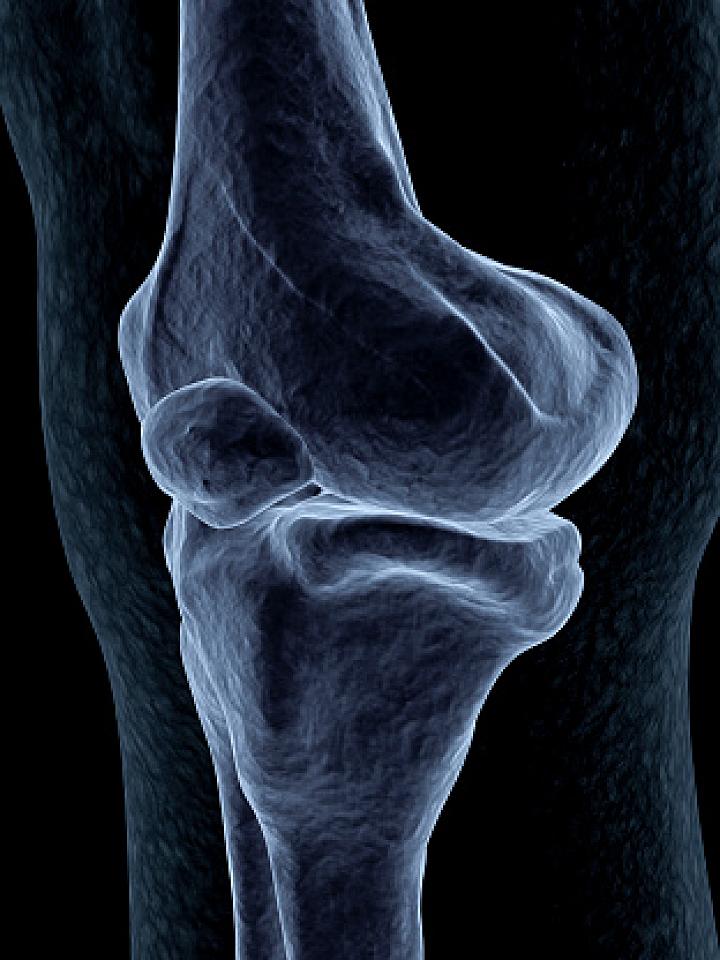The Anatomy of the Knee-Hip Relationship
The knee is an incredible joint that bears the brunt of our weight during movement. Its intricate structure, consisting of bones, ligaments, and cartilage, enables a remarkable range of motion. However, what many people may not realize is that the knee’s function is intimately connected to the hip. The anatomical relationship between these two joints forms the foundation of our mobility and balance.

Image: www.slideshare.net
The femur, the thigh bone, connects the knee and hip joints. The upper end of the femur, known as the femoral head, fits snugly into the acetabulum, forming the ball-and-socket hip joint. This configuration allows for wide-ranging movement, including flexion, extension, abduction, and rotation. The knee joint, located at the distal end of the femur, serves as a hinge joint, enabling bending and straightening.
It is not just the physical connection that binds the knee and hip; their functions are also interlinked. The knee provides stability to the hip, allowing it to withstand the forces exerted during activities like walking, running, and jumping. In turn, the hip supports the knee, ensuring optimal movement and alignment. Understanding the cooperative relationship between these joints is crucial for maintaining overall joint health and preventing mobility limitations.
The Biomechanics of Knee-Hip Interaction
The biomechanics of the knee-hip interaction is fascinating. As the knee flexes, the hip extends, and vice versa. This coordinated action helps maintain balance and prevents excessive stress on either joint. The muscles surrounding the knee and hip also contribute to this dynamic interplay.
The quadriceps, located on the front of the thigh, and the hamstrings, on the back, control knee flexion and extension. The hip extensors, such as the glutes and hamstrings, work in coordination with the knee extensors to enable powerful movements like running and jumping. When these muscle groups are strong and balanced, both the knee and hip function optimally, promoting efficient and pain-free movement.
However, imbalances in muscle strength or structural abnormalities can disrupt this harmonious biomechanical relationship, leading to pain and dysfunction. For instance, weak hip extensors can place excessive stress on the knee, increasing the risk of injuries like patellofemoral pain syndrome and osteoarthritis. Understanding the biomechanics of the knee-hip connection is essential for assessing and rehabilitating knee and hip conditions.
Latest Developments in Knee-Hip Research
Advances in medical research are continually expanding our understanding of the knee-hip relationship. One emerging area of interest is the impact of hip mobility on knee health. Studies have found that limited hip mobility can contribute to knee pain and dysfunction.
Another area of active research is the role of gait analysis in diagnosing and treating knee-hip conditions. Gait analysis involves analyzing the way an individual walks to identify potential movement abnormalities that may contribute to pain or mobility limitations. By understanding the gait patterns associated with knee and hip pathologies, healthcare practitioners can develop tailored interventions to improve joint function and prevent further complications.
Additionally, surgical techniques for knee and hip disorders are不断演化ing. Minimally invasive procedures, such as arthroscopic knee surgery, now allow for faster recovery and less post-operative pain than traditional open surgeries. Joint replacement surgeries are also becoming more sophisticated, with personalized prosthetics and advanced materials improving implant longevity and patient outcomes.
Expert Advice for Maintaining Healthy Knees and Hips
To ensure healthy knees and hips, it is essential to follow these expert tips:
- Maintain a healthy weight: Excessive weight puts extra stress on the knee and hip joints, increasing the risk of pain and arthritis.
- Engage in regular exercise: Exercise strengthens the muscles surrounding the knee and hip, improving their stability and resilience.
- Warm up before activity: Preparing the knee and hip joints for activity helps reduce the risk of injury.
- Wear supportive shoes: Properly fitting shoes provide adequate arch support and cushioning, reducing stress on the joints.
- Listen to your body: If you experience any pain or discomfort in the knee or hip, stop the activity and rest.
Incorporating these tips into your daily routine can significantly reduce the chances of developing knee or hip problems. If pain persists or worsens, it is important to consult a healthcare professional for prompt diagnosis and treatment.

Image: healthcare.utah.edu
FAQ on the Knee-Hip Relationship
Here are some frequently asked questions about the relationship between the knee and hip:
-
Q: Can knee problems affect the hip?
-
A: Yes, chronic knee pain can lead to compensatory gait patterns, putting extra stress on the hip joint and potentially causing hip pain.
-
Q: What are some common causes of knee-hip pain?
-
A: Common causes include osteoarthritis, ligament injuries, muscle imbalances, and hip impingement.
-
Q: How do physical therapists treat knee-hip pain?
-
A: Physical therapists assess muscle strength and mobility to identify imbalances and prescribe individualized exercises to restore optimal function.
The Knee Is Blank To The Hip
Conclusion: The Knee-Hip Nexus
The knee and hip are connected in both form and function, a connection that allows us to move with fluidity and grace. Maintaining the health of both these joints is paramount for overall mobility and well-being. By understanding the knee-hip relationship, following expert advice, and engaging in preventive measures, you can reduce the risk of pain and dysfunction, ensuring a lifetime of pain-free movement.
Are you interested in learning more about the intricacies of the knee-hip relationship? If this topic has piqued your curiosity, feel free to explore further through reliable medical sources and consult healthcare professionals for specialized advice. By delving deeper into the fascinating world of human anatomy, you empower yourself with knowledge and contribute to your lifelong health and well-being.